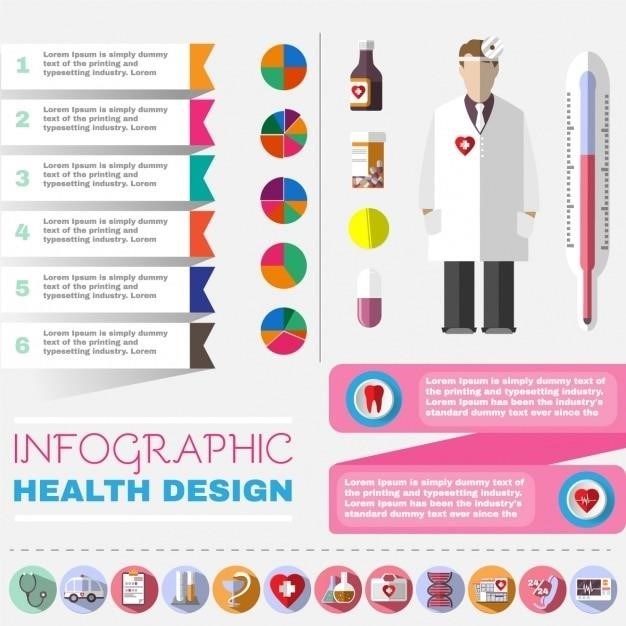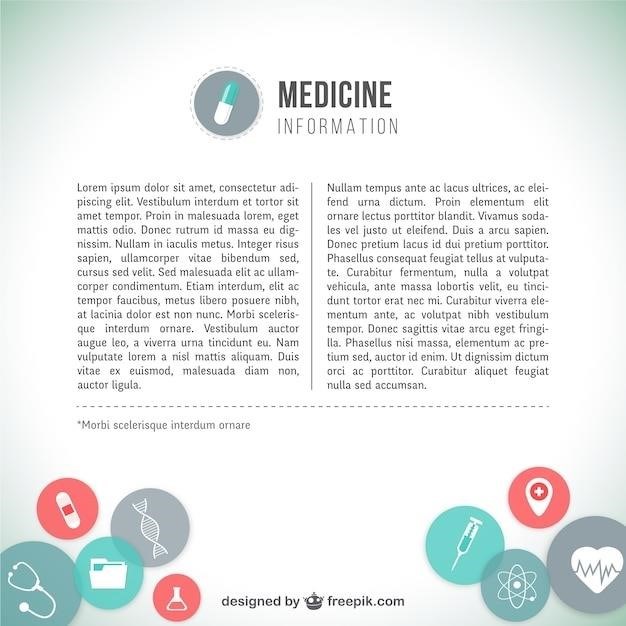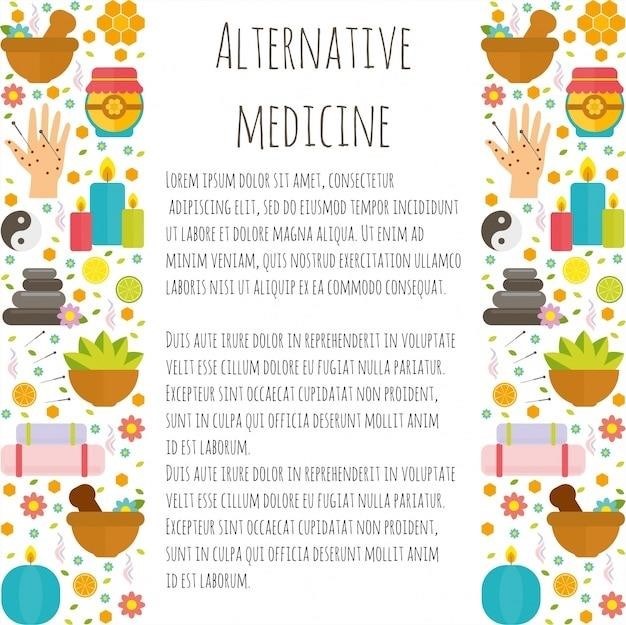Visual Mnemonics for Medicine⁚ A Powerful Tool for Learning
Visual mnemonics are a powerful tool for learning medical information․ They can help you remember complex concepts, medical terms, and drug names․ There are many free resources available online that offer visual mnemonics for medicine, including PDF downloads․ These resources can be a valuable asset for medical students, nurses, and other healthcare professionals․
What are Visual Mnemonics?
Visual mnemonics are a type of memory aid that uses imagery to help you remember information․ They work by associating a visual image with a concept or fact that you need to learn․ For example, you might create a mental picture of a heart to help you remember the different parts of the cardiovascular system․
Visual mnemonics are particularly effective for learning complex information because they engage multiple parts of the brain․ When you create a visual mnemonic, you are using your visual cortex, your language center, and your memory center․ This multi-sensory approach helps to strengthen the connections between different parts of your brain, making it easier to recall the information later․
There are many different types of visual mnemonics, but they all share the same basic principles⁚
- They use images to represent information․
- They are designed to be memorable and easily recalled․
- They can be used to learn a variety of information, including facts, concepts, and procedures․
Visual mnemonics are a powerful tool for learning, and they can be particularly helpful for students of medicine․ The human body is incredibly complex, and there is a lot of information to learn about its structure, function, and diseases․ Visual mnemonics can help you organize this information and make it easier to remember․
How Visual Mnemonics Work in Medicine
Visual mnemonics work in medicine by taking advantage of the way our brains process information․ Our brains are wired to remember images more easily than words or abstract concepts․ When we create a visual mnemonic, we are essentially creating a shortcut in our memory․ Instead of trying to remember a long list of facts, we can simply recall a single image that represents all of that information․
For example, let’s say you’re trying to remember the different types of white blood cells․ You could create a visual mnemonic that includes a picture of a white blood cell with different labels for each type․ Or, you could create a story that involves different types of white blood cells fighting off an infection․

Visual mnemonics can also be used to remember drug names and their mechanisms of action․ For example, you might create a picture of a drug molecule interacting with a target receptor․ This visual representation can help you remember the drug’s name and its intended effect․
The effectiveness of visual mnemonics in medicine is further enhanced by the fact that medical students often learn by visual means․ They study anatomical diagrams, microscopic images, and clinical photographs․ By incorporating these visual elements into mnemonics, students can tap into their existing knowledge and make the information more memorable․
Overall, visual mnemonics are a powerful tool for learning medical information․ They can help you remember complex concepts, drug names, and clinical presentations․ With a little creativity, you can create your own visual mnemonics that will help you succeed in your medical studies․

Benefits of Using Visual Mnemonics in Medicine
Visual mnemonics offer a multitude of benefits for those in the medical field, particularly for students and professionals seeking to enhance their learning and recall of complex medical information․ These benefits include⁚
Enhanced Memory Retention⁚ Visual mnemonics utilize the power of imagery to create strong and lasting memories․ By associating concepts with vivid images, they bypass the limitations of rote memorization, enabling individuals to retain information more effectively․
Improved Comprehension⁚ Visual mnemonics not only help remember facts but also foster deeper understanding․ By visualizing relationships and connections between concepts, they promote a more holistic grasp of medical knowledge․
Increased Efficiency⁚ Visual mnemonics streamline the learning process, allowing individuals to condense large amounts of information into easily digestible visuals․ This efficiency saves time and effort while maximizing information retention․
Reduced Stress and Anxiety⁚ The use of visual mnemonics can alleviate the stress and anxiety often associated with memorizing vast medical information․ By simplifying complex concepts and providing a structured approach to learning, they instill confidence and reduce the burden on memory․
Enhanced Exam Performance⁚ Visual mnemonics are particularly useful for exam preparation, as they provide a quick and effective way to access and recall crucial information․ They can be invaluable for navigating challenging exam questions and applying knowledge to real-world scenarios․
These benefits make visual mnemonics a valuable tool for medical students, nurses, and other healthcare professionals seeking to master their field․ They provide a powerful and engaging approach to learning that can significantly enhance knowledge retention and overall understanding․
Types of Visual Mnemonics for Medicine
Visual mnemonics encompass a diverse range of techniques, each tailored to specific learning needs․ Here are some common types employed in the medical field⁚
Acronyms and Acrostics⁚ These mnemonics utilize the first letters of words to create a memorable phrase or acronym․ For example, “SOAP” represents Subjective, Objective, Assessment, and Plan, a common framework for medical documentation․
Images and Diagrams⁚ These mnemonics use visual representations to depict complex concepts or relationships․ For example, a diagram illustrating the flow of blood through the heart can help students remember the pathway․
Mind Maps⁚ Mind maps are visual organizers that use branches and nodes to connect concepts․ They are particularly useful for summarizing large amounts of information and establishing connections between different topics․
Storytelling⁚ This technique involves creating a narrative around key concepts to make them more memorable․ For example, a story about a patient experiencing a specific medical condition can help students recall the symptoms and treatment․
Rhymes and Songs⁚ Rhymes and songs can be effective for memorizing facts and processes․ For example, a catchy tune about the stages of labor can help nurses remember the steps involved․
The specific type of visual mnemonic used will depend on the individual’s learning style and the nature of the information being learned․ However, all types of visual mnemonics share the common goal of enhancing memory and understanding by utilizing the power of imagery and visualization․
Visual Mnemonics for Anatomy
Anatomy, with its intricate structures and complex relationships, presents a unique challenge for memorization․ Visual mnemonics prove to be a valuable tool for tackling this challenge, transforming abstract anatomical concepts into vivid and memorable images․
For instance, ““Never Let Monkeys Eat Bananas”” is a popular mnemonic for remembering the order of the major arteries in the upper limb, from proximal to distal⁚ Never, Let, Monkeys, Eat, Bananas, which correspond to the Numerous, Lateral, Median, Ulnar, Brachial arteries, respectively․
Another example is the mnemonic ““Some Lovers Try Positions That They Can’t Handle”“, which helps remember the order of the vertebral bones⁚ Sacrum, Lumbar, Thoracic, Cervical, Hyoid bone․
Beyond acronyms and acrostics, visualizing anatomical structures through diagrams, illustrations, and even 3D models can significantly enhance understanding and retention․ Many free online resources, including PDFs, offer these visual aids, making learning anatomy more engaging and effective․
By employing visual mnemonics, students can overcome the challenge of memorizing complex anatomical details, fostering deeper understanding and facilitating their journey through the intricate world of human anatomy․
Visual Mnemonics for Pharmacology
Pharmacology, the study of drugs and their effects, requires memorizing a vast array of drug names, mechanisms of action, side effects, and drug interactions․ Visual mnemonics become indispensable tools for navigating this complex landscape․
For instance, the mnemonic ““BAD SAM”” helps remember the side effects of beta-blockers⁚ Bronchospasm, Asthma exacerbation, Depression, Sleep disturbances, Angina, Myocardial infarction․
Another example is the mnemonic ““ACE”“, which stands for Angiotensin-Converting Enzyme, reminding students of the class of drugs that inhibit this enzyme, such as lisinopril and enalapril, used for managing hypertension․
Visualizing drug structures, pathways of action, and interactions through diagrams and flowcharts can greatly enhance comprehension and retention․ Many free online resources, including PDFs, provide these visual aids, simplifying complex pharmacological concepts․
Visual mnemonics in pharmacology bridge the gap between abstract knowledge and practical application, allowing students to recall crucial drug information quickly and efficiently․ By incorporating these visual aids, learners can confidently navigate the world of pharmacological knowledge․
Visual Mnemonics for Microbiology
Microbiology, the study of microscopic organisms, presents a unique challenge for students․ Learning about diverse bacteria, viruses, fungi, and parasites, their structures, modes of infection, and treatment strategies can be overwhelming․ Visual mnemonics offer a lifeline, transforming abstract knowledge into easily digestible information․
For example, the mnemonic ““MRSA”” stands for Methicillin-Resistant Staphylococcus Aureus, a common bacterial infection that requires specific treatment strategies․ Visualizing this mnemonic alongside a diagram of the bacteria and its resistance mechanisms can enhance comprehension․
Visual mnemonics can also be used to remember the lifecycle of parasites like the malarial parasite, Plasmodium․ A simple illustration depicting the different stages of the parasite within the mosquito and human host can aid in understanding the complex life cycle and the associated disease․
Free PDF resources available online often incorporate visual mnemonics for microbiology․ These resources provide a range of diagrams, flowcharts, and illustrations that simplify complex microbiological concepts․ They can be a valuable tool for students, helping them visualize and remember key information․
Using visual mnemonics in microbiology can make studying this fascinating but often challenging subject more engaging and effective․ They help students develop a deeper understanding of microbial processes and their impact on human health․
Visual Mnemonics for Pathology
Pathology, the study of disease, involves understanding complex processes like cell injury, inflammation, and tumor development․ It requires memorizing numerous disease entities, their causes, and their characteristic microscopic features․ Visual mnemonics can be a valuable tool for mastering this vast and intricate field․
Imagine visualizing the different types of lung cancer, each represented by a unique visual symbol․ For example, a “S” shaped symbol could represent Small cell lung cancer, while a “N” shaped symbol could represent Non-small cell lung cancer․ This visual association can make it easier to recall the distinct characteristics of these cancers․
Visual mnemonics can also be used to remember the different types of inflammation․ A simple diagram depicting the stages of inflammation—from initial injury to healing—with corresponding visual cues for each stage can facilitate understanding and retention․
Free PDF resources dedicated to pathology often incorporate visual mnemonics․ These resources can provide a range of diagrams and illustrations, from microscopic images of diseased tissues to flowcharts illustrating the pathogenesis of various diseases․ They offer a visual approach to learning complex pathological concepts․
By employing visual mnemonics, students can engage with the visual aspects of pathology, making learning more effective and enjoyable․ These visual tools help bridge the gap between theoretical knowledge and practical application, enhancing comprehension and retention of key pathological information․
Where to Find Free Visual Mnemonics Resources
The internet has become a treasure trove of free resources for medical students and professionals seeking visual mnemonics․ A quick online search can yield a wealth of information, including PDF downloads, websites, and online platforms dedicated to visual mnemonics in medicine․
One popular source for free visual mnemonics resources is Scribd․ This online platform offers a vast library of documents, including many related to medicine․ Search terms like “Visual Mnemonics Medicine PDF” or “Visual Mnemonics Pharmacology PDF” can lead you to helpful resources․
Another website to explore is Dr․ Notes, which features a collection of medical notes and resources․ You might find free PDF downloads of visual mnemonics specifically designed for pathology, like “Medinaz Visual Mnemonics Pathology First Edition” by Nazmul Alam․
Additionally, online forums and communities dedicated to medical education often share free visual mnemonics resources․ These communities are valuable for finding specific mnemonics related to your area of interest, such as cardiology or immunology․
When searching for free resources, be sure to look for reputable sources, like academic institutions, medical societies, and well-established online platforms․ Check the date of publication to ensure the information is up-to-date and accurate․
Tips for Creating Effective Visual Mnemonics
While many free resources offer pre-made visual mnemonics, creating your own can be a highly effective way to personalize your learning and deepen your understanding․ Here are some tips for crafting powerful and memorable visual mnemonics⁚
Keep it Simple⁚ Avoid overly complex images or mnemonics․ The goal is to create a clear and easily recognizable association․ Simple, memorable images are more likely to stick in your mind․
Relate to Existing Knowledge⁚ Connect new information to concepts you already understand․ This creates a bridge in your memory and makes it easier to recall․
Use Humor⁚ Humor can be a powerful tool for memory․ If you can make your mnemonic funny or amusing, you’ll be more likely to remember it․
Use Vivid Imagery⁚ Engage your senses by creating vivid images that are colorful, detailed, and memorable․ Think about how the image would look, feel, smell, or sound․
Incorporate Multiple Senses⁚ Engage multiple senses by incorporating sound, touch, or even movement into your mnemonics․ This can further enhance memory retention․
Practice Regularly⁚ Revisit your mnemonics regularly to reinforce the connections in your memory․ This can help solidify the information and make it easier to recall when needed․
Share with Others⁚ Sharing your mnemonics with classmates or colleagues can help solidify your understanding and provide valuable feedback․
